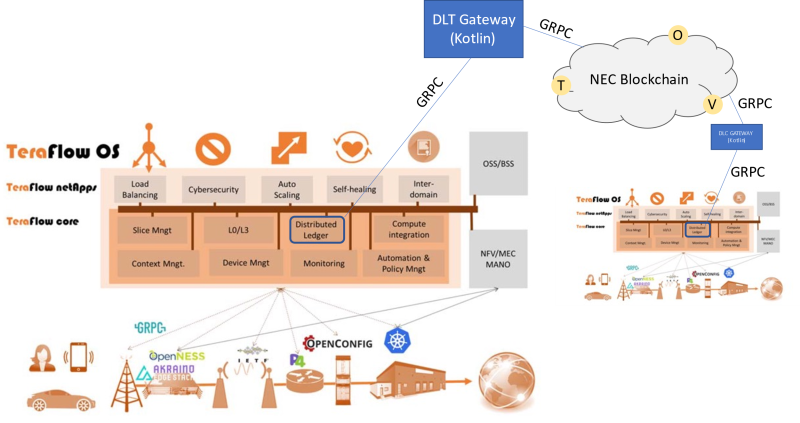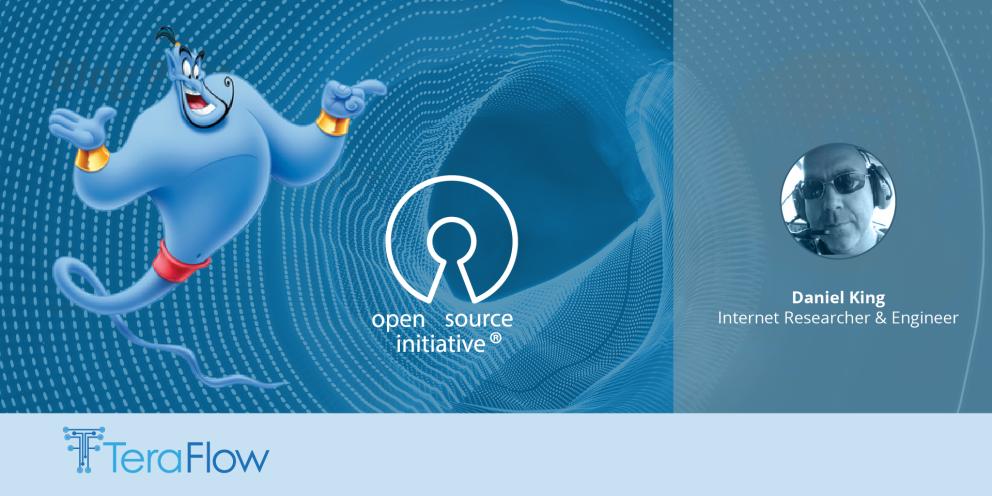Within the TeraFlow project, we are extensive users and developers of open source software. Beyond the mainstream operating system, databases and code automation tools, TeraFlow uses several state-of-the-art open source projects for the TeraFlow SDN controller itself.
Recent posts
Let us count some of the major open source components in TeraFlow and their benefits:
- Using the ONNX runtime AI project to provide intelligent capabilities in the TeraFlow SDN toolkit. The ONNX APIs optimise our intelligent algorithms and accelerate the use of machine learning training and interference;
- Enabling a TeraFlow smart contract blockchain capability using the Hyperledger Fabric;
- Creating a P4 device driver capability to programme and manipulate physical and virtual switches that support the ONF Stratum silicon-independent switch operating system from the TeraFlow SDN platform;
- Connecting interfaces into the TeraFlow SDN controller using gRPC, a high-performance, universal RPC framework;
- Using Kubernetes, the open-source container orchestration system for automating the TeraFlow SDN software deployment, load balancing, scaling, and management.
- TeraFlow uses Tstat as a statistical analysis tool for TCP traffic measurement and performance evaluation.

One of our significant successes will be the TeraFlow SDN (TFS) platform itself and the creation of the ETSI Open Source Group TeraFlowSDN (OSG TFS). The OSG TFS defines a framework and provides an open source repository for developing the TeraFlow SDN controller for high-capacity networks supporting 5G and beyond 5G networks.
The various open source initiatives discussed above will leave a lasting positive legacy that will live beyond the formal completion of the project.
Why is there a warning in this blog title?

Be careful when asking Genie for an open-source wish. Open source software may provide several benefits to users and developers, such as reduced development times, shared maintenance costs, freedom to customise, scalability and flexibility. However, it can also pose several significant challenges, from unexpected start-up and training costs, steep learning curves, complex compatibility issues, and a lack of support in the event of faults or issues that the local users cannot diagnose.
How do we ensure that the TeraFlow SDN open source initiative is successful?
It is impossible to guarantee success when it comes to open source, but as we continue to develop TFS, we have considered the following and mitigated risk where possible:
- Reliability: Being an OSS component, the TFS platform will be critical to the operation of the network. The platform is built over a distributed architecture with best-in-class resilience and scaling;
- Support: Moving TFS into ETSI provides a community and processes for rapid prototyping and experimentation with innovative network technologies and use cases;
- Reputation: The TeraFlow project has several European technical leaders with a proven track record in disruptive innovation and technology development. Several partners have also joined the ETSI TFS participants;
- Documentation: Several papers published by the project show how TFS can be used and developed. The project also created a tutorial and virtual machines to accelerate TFS learning.
- Interoperability: TeraFlow hosted its first TFS “Hackfest” in October 2022, allowing developers to engage in rapid and collaborative engineering around the TFS platform;
- Security: Increasingly important is security, and the TFS platform was designed from its inception to be secure and implement hardening to detect vulnerabilities and negate or mitigate attacks. The TFS smart contract capability uses Hyperledger Fabric blockchain technology.
Alas, we will not be able to ask our Genie to look into the future and tell us if our open source will be successful. However, we have done everything we can to give the TFS platform a strong start that may allow it to develop into something truly extraordinary and be used by organisations worldwide for many years.

